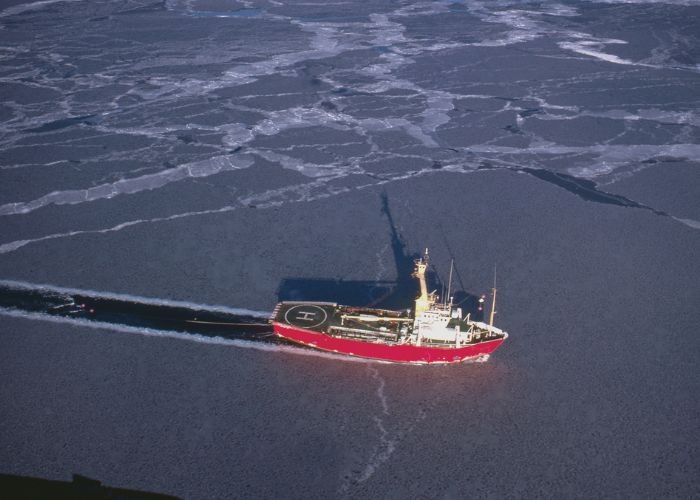The newly released Arctic Report Card 2022 received from the National Oceanic and Atmospheric Administration (NOAA) in the US includes details that are no surprise. Temperatures are rising, and sea ice is melting. But with the changes comes one that is not as obvious: an increased noise from shipping traffic, possibly impacting marine life.
Over time, the rising number of vessels in international and national maritime jurisdictions toward the north of the Arctic Circle brings diverse questions related to relative ship-traffic changes, explained some experts associated with the Science Diplomacy Center who’d authored the report card’s shipping section.
Since 2009, when satellites started tracking Arctic maritime channels, vessel traffic has gone up as the sea ice barrier lowered. That was true of vessels coming via the Bering Strait from the Pacific Ocean to the Beaufort Sea. Specialists monitor Arctic shipping for various reasons, including the evolving geopolitical competition and national security concerns over the economic advantages of maritime access.
There are several arguments regarding why Arctic shipping may offer benefits related to carbon emissions by lowering the length of maritime channels. But vessel strikes and underwater noise impact marine birds and mammals, with the ability to disrupt delicate ecosystems encountering pressure from climate changes.
Dr Kate Stafford, associated with the Marine Mammal Institute at Oregon State University, is a specialist on how marine shipping could impact underwater biophony or soundscape of the Arctic — and then transform it as anthrophony, the ecosystem of sound introduced by humans.
Marine animals and mammals rely on sound more than other senses to find food, communicate over long distances, and navigate for reproductive displays, explains Stafford in 2021. Over the past few years, acoustic data have documented the changes in Arctic marine mammals’ seasonal distribution.
The vessels themselves are not the only source of the disruptive sound. Oil and gas exploration and drilling also impact underwater sound in the Arctic. But low-frequency sound of vessels might travel hundreds of kilometers, and some channels have witnessed a 44% increase in traffic (measured between 2013 and 2019). Fishing boats and cargo vessels are typical, but in 2021, four liquid natural gas (LNG) tankers sailed the Northern Sea Route without requiring icebreakers.
How that affects marine life is not fully known, even though research demonstrates the interference with navigation and communication signals and enhanced stress. It also depends on the precise sounds: low-frequency sounds are more of an issue for bowhead whales, whereas mid-frequency sounds significantly impact ice seals and walruses.
As extensive commercial shipping in the Arctic is a comparatively new phenomenon, Arctic species may have a lower tolerance of, and react more strongly to, such noise, mentioned Stafford, highlighting data from the Protection of the Arctic Marine Environment (PAME) group of the Arctic Council.
Arctic shipping does not simply impact marine life only. Indigenous communities home on Arctic islands and coastlines depend on marine ecosystems for livelihood and are most vulnerable to shipping traffic rises facilitated by melting ice.
The NOAA report card calls for an enhanced understanding of impacts across a continuum of urgencies to build resilience as the Arctic environment evolves.
Source: Marine Insight News






